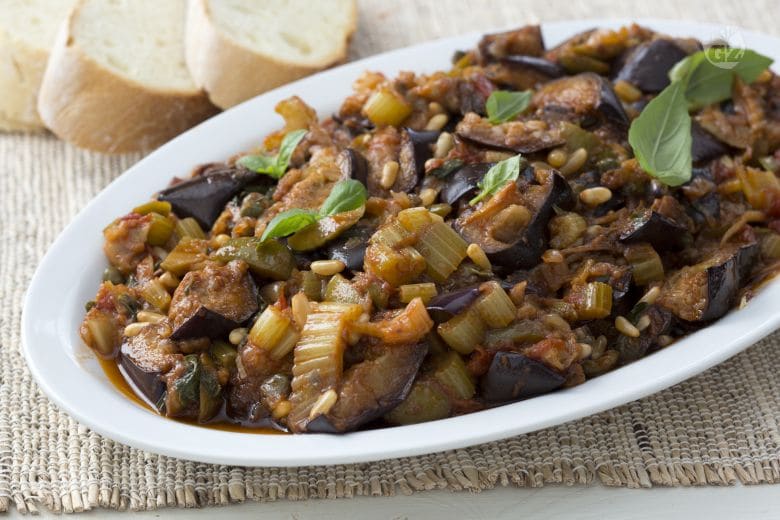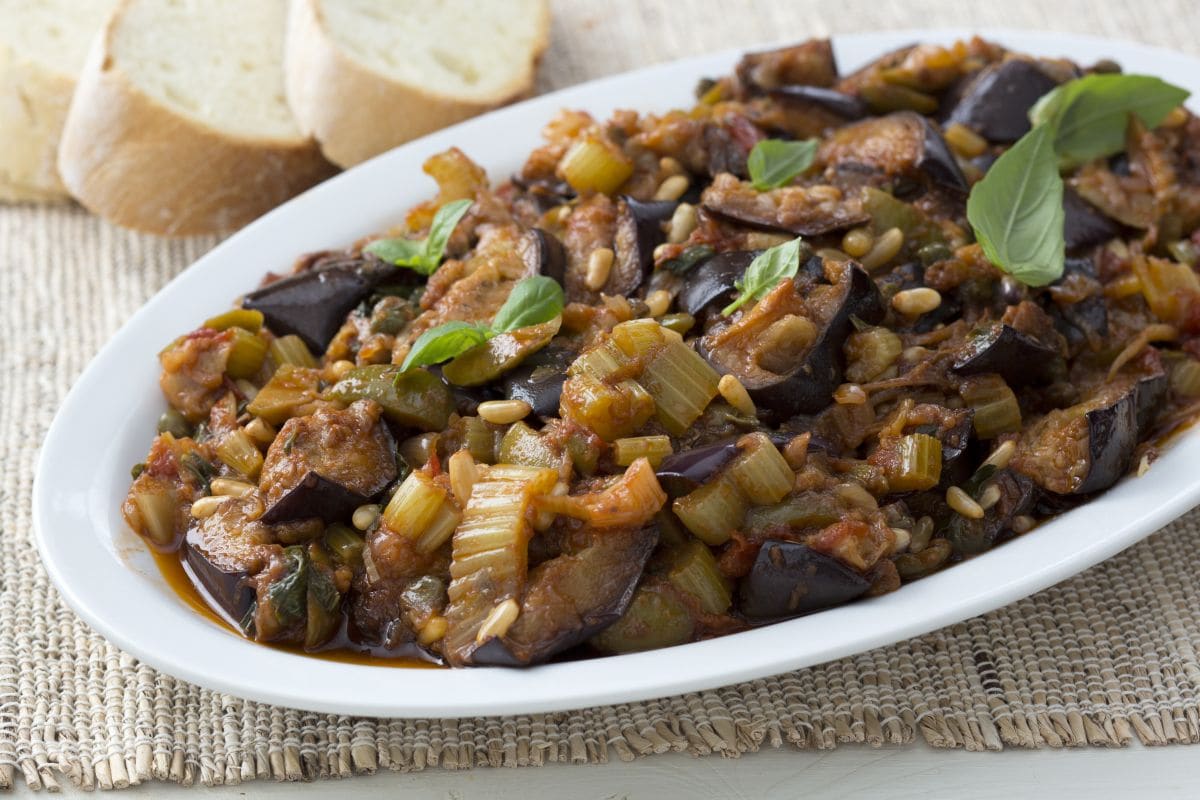Eggplant roulades
- Very easy
- 45 min
- Kcal 133


Fresh color and bold taste make eggplant caponata a favorite at family get-togethers or whenever people crave those classic Mediterranean flavors—honestly, most home cooks find themselves going back for seconds. This sweet and sour eggplant creation really pops with that tangy lift from vinegar, hints of sweet raisin, and a rich, savory bite thanks to olives and capers. Every spoonful of this Sicilian eggplant salad feels like a vacation in a bowl, with the soft texture and flavorful punch you expect from a great ITALIAN delight. Served as a vegan appetizer or as the main event alongside crusty bread (sometimes families love using it to top chicken too), the nice, vibrant look with those colorful vegetables always gets people talking. Salty, good and balanced—really works well for anyone who loves variety on their table (especially when you're looking for that satisfying mix of flavors and a little something different for dinner).
Busy families appreciate the way this traditional Sicilian dish fits right into all sorts of routines, whether it's for a sunny picnic, an easy lunch spread, or one of those relaxed weeknight dinners when you want to eat something fun but filling. What helps is the versatility—Italian eggplant dish fans serve it cold for a refreshing twist, but honestly, served warm it’s still DELICIOUS (sometimes people can’t believe how good either option tastes). As a quick summer appetizer or an extra on your buffet, this Caponata recipe adapts easily—some folks even add a dash of pine nuts or a sprinkle of fresh basil for a moist aromatic lift. Easy to share, easy to love, caponata tends to bring smiles around the table, and the fluffy texture stands out next to grilled meats or tossed into a salad. Expect platefuls to disappear fast... because this special dish gives every meal that genuine, joyful Sicily feeling and keeps everyone happily reaching for more.
You might also like:

To make caponata (eggplant salad), first clean the onion and slice it thin 1. Trim the celery and cut it into thin slices 2. Cut the green olives in half and remove the pits 3.

Wash and dry the eggplants, trim and cut them into approx. 1-inch (2.5 cm) thick pieces 4. Do the same with the tomatoes 5. Heat a frying pan and toast the pine nuts for a few minutes 6

until they are golden in color 7. Now take your eggplants: put the olive oil in a high-sided pan and heat it, pour a few eggplant pieces in at a time and fry them for a few minutes 8. Once they are golden, drain them with the skimmer and place them on a tray lined with absorbent paper to remove excess oil 9, then set aside.

In a large pan pour a generous round of olive oil, heat it and then pour in the onion 10. Fry well until the onion has a light golden color, then add the celery 11; let it brown well, then add the capers 12,

olives 13, roasted pine nuts 14 and tomatoes 15.

Brown for a few moments, then cover with the lid 16 and cook over low heat for 15-20 minutes. In the meantime, prepare the sweet-and-sour sauce: pour the vinegar, tomato paste 17 and sugar 18 into a small pot.

Mix well with a teaspoon 19 and, after 15-20 minutes of cooking, add salt and pour the sauce into the pan 20. Turn up the heat and stir until the smell of vinegar has evaporated. Turn off the flame, add the fried eggplant 21

and sprinkle with plenty of basil 22. Mix everything well 23, transfer the caponata (eggplant salad) in an ovenproof dish and put it in the fridge. This dish should be served cold or at room temperature and will taste even better the next day.